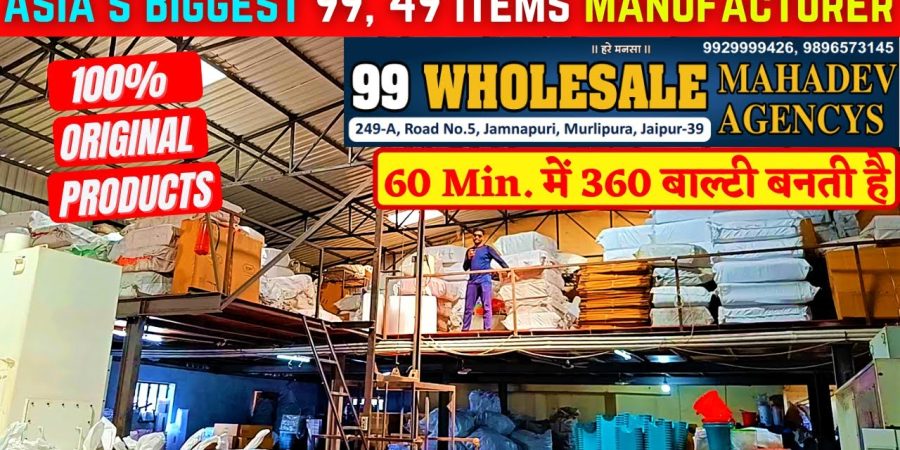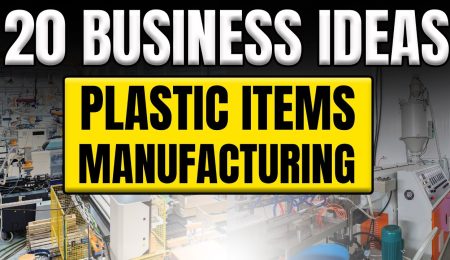India has become a hub for plastic product manufacturing, supplying a wide array of products to domestic and international markets. This article takes you through the comprehensive process of manufacturing plastic products like buckets, boxes, stools, and more, from raw materials to finished goods, including packaging.
1. Raw Material Procurement
The journey of plastic product manufacturing begins with the procurement of raw materials. The primary raw material used is plastic polymers, which come in various types, such as:
- Polyethylene (PE)
- Polypropylene (PP)
- Polyvinyl Chloride (PVC)
- Polystyrene (PS)
- Acrylonitrile Butadiene Styrene (ABS)
These raw materials are sourced from petrochemical plants or recycled plastic suppliers and delivered in the form of pellets or granules.
2. Material Preparation
Before the manufacturing process begins, the raw plastic pellets undergo several preparatory steps:
- Drying: To remove any moisture content, which can affect the quality of the final product.
- Mixing: The raw materials may be mixed with additives like colorants, UV stabilizers, or other agents to enhance the properties of the plastic.
3. Injection Molding
For manufacturing items like buckets, boxes, and stools, injection molding is the most common technique. Here’s a step-by-step overview:
- Mold Design: The first step is designing the mold based on the product specifications. Molds are usually made from high-grade steel or aluminum.
- Melting: The plastic pellets are fed into a hopper and then into a heated barrel, where they are melted.
- Injection: The molten plastic is injected into the mold cavity at high pressure.
- Cooling: The mold is cooled to solidify the plastic into the desired shape.
- Ejection: Once the plastic has solidified, the mold opens, and the finished product is ejected.
4. Blow Molding
Blow molding is another technique used, especially for hollow products like plastic bottles. The process involves:
- Extrusion: Plastic is extruded into a tube.
- Inflation: The tube is clamped into a mold and air is blown into it, inflating the plastic into the shape of the mold.
- Cooling and Ejection: The mold cools the plastic, and the finished product is ejected.
5. Rotational Molding
This process is used for making large, hollow items such as storage tanks and large containers. Steps include:
- Loading: Plastic powder is loaded into a mold.
- Heating and Rotation: The mold is heated and rotated on multiple axes, causing the powder to melt and coat the interior of the mold.
- Cooling: The mold is cooled, and the plastic solidifies.
- Demolding: The mold is opened, and the hollow product is removed.
6. Finishing Processes
After molding, the products may require finishing touches:
- Trimming: Excess material or flash is trimmed off.
- Smoothing: Surface imperfections are smoothed out.
- Painting or Coating: Some products may be painted or coated for additional protection or aesthetics.
7. Quality Control
Quality control is a crucial step in the manufacturing process. It involves:
- Inspection: Visual inspection for defects.
- Testing: Functional testing to ensure the product meets specified criteria.
- Dimensional Checks: Ensuring the product dimensions are within tolerance limits.
8. Assembly
Some products may require assembly of multiple components. This step involves:
- Fitting: Assembling the various parts together.
- Joining: Using methods like welding, adhesive bonding, or mechanical fastening.
9. Packaging
Once the products are finished and quality-checked, they move to the packaging stage:
- Cleaning: Ensuring the products are clean before packaging.
- Labeling: Attaching labels with product information and barcodes.
- Packing: Products are packed in boxes or shrink-wrapped to protect them during transportation.
- Palletizing: Boxes are stacked on pallets and wrapped for stability during shipping.
10. Distribution
Finally, the packaged products are ready for distribution. They are shipped to warehouses, retailers, or directly to customers.
The manufacturing process of plastic products involves multiple sophisticated steps, from raw material procurement to the final packaging and distribution. With state-of-the-art technology and stringent quality control, leading manufacturers in India are able to produce a wide range of high-quality plastic products efficiently and sustainably. This detailed process ensures that everyday items like buckets, boxes, and stools are readily available, meeting the demands of consumers both domestically and internationally.
Supplier or Manufacturer from India? Register FREE and List Your products





Leave feedback about this